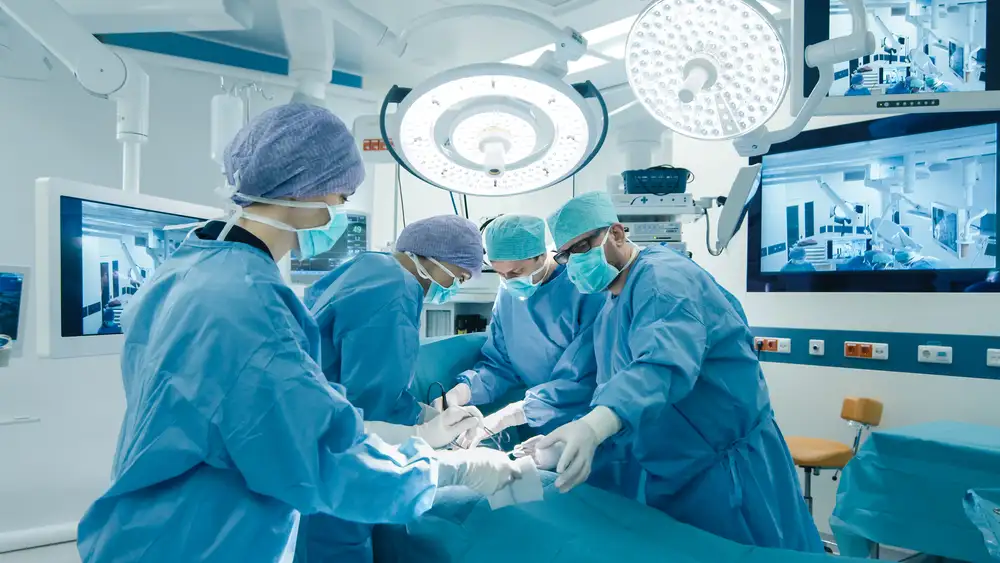As the world has changed people have had to change how they address their medical requirements. With modern technology and improved healthcare facilities, patients aren’t just able to heal quicker but also to survive difficult circumstances.
Modular theaters are one of the top rooms for operations currently available. Modular theater designers suggest that they provide an efficient and stable workstation by utilizing modern robotic systems. With the use of a system that is modular, surgeons are able to quickly change sequences in the Anastomosis (connection) techniques, thus reducing the amount of time required for operation.
Modular Operating room solutions give that modular structures benefit from quick construction and high-quality finishing, preventing contamination from building up. The benefit of pre-engineered modular theaters(rooms) is that they’re durable, robust, sturdy, and flexible in their design.
Designing a brand new operating room is a complicated process that involves balancing the demands of the staff members in the facility with building costs and considering the future trends in healthcare. Hiring a leading IT solutions provider offers the best OT Room Solutions to ensure that construction and planning are smooth, it is essential to think about every possibility before starting the development process.
Audit Present Operating Room:
Before beginning the facility’s planning process, it is necessary to assess the current operating room layout and how it is being utilized. Are there any navigational or bottlenecking problems in the existing operating room?
In this manner, you should identify and talk to employees to gather their opinions. This does not just include the surgical staff but the staff working in administration, radiology lab, and other departments.
Surgery is “the captain of the ship” and is accountable for the actions of the people and the workflow of the operation room. The surgeon should periodically take a step back to examine the procedure’s flow and anticipate versus expected results.
Set Goals for the New Project
What is the goal in the surgical room? Is the hospital planning to incorporate or increase its capabilities in imaging? Does the new facility need more space for special procedures that may require a more excellent surgical staff? When beginning the design and planning phases, it is essential to have several aspects thought about. These are easily divided into dimensions, orientation, layout, and support systems. Other designs for the spaces are crucial too. For promotion, a digital marketing agency in Ahmedabad, Gujarat, India.
Room Size:
According to its Operational Room Guidelines for 2014 in 2014, the Facility Guidelines Institute recommends that the operating room’s minimum size not be lower than 400 square feet. Operating rooms designed to accommodate specialized procedures usually require more personnel and are suggested to have a minimum of 600 sq ft.
Room for Expansion:
When the expansion of facilities is prompted by changes in regulations or is a consequence of a fast-growing procedure, the well-planned OR can grow and adapt when required.
Current Space Expectations in Today’s Operating Room:
An essential aspect of designing the layout of an operating room is arranging the equipment needed while ensuring all the tasks are performed daily there. Some of these jobs, like transfers of patients and sterile equipment installation, and the use of a mobile C arm during a procedure, take up an enormous amount of space. A modern OR should be able to handle each of these tasks and still allow everyone in the surgical team to complete each procedure efficiently.
Space Saving Solutions
One way to ensure that there’s enough room for maneuvering in a smaller operating room is to design the room around the table for surgery. The larger rooms are more flexible in the positioning of the operating room table, as there will always be plenty of space for moving around the edges.
Modern operating room Solutions and ceiling-mounted booms have enabled the designers of operating rooms to maneuver within the limited floor space. It’s not uncommon to find an array of devices and system ports on the booms, which can be placed easily to facilitate a range of processes.
System Development
Successfully arranging equipment and furnishings in the operating room is contingent on the infrastructure and architectural systems put in place during the building process. Without careful preparation and installing these systems, the functional area cannot function effectively. For managed IT networking solution provider in Ahmedabad, Gujarat, India.
Future Operating Rooms Designs
As minimally-invasive procedures become the norm and hybrid operating rooms are predicted to be the most prevalent kind of operation suite. To construct a functional space that will last, it’s essential to consider the possibility of integrating new technologies, including endovascular MRI and imaging devices. Preparedness for new technology might include increasing the size of the operating area and ensuring that the room is flexible and has modular designs. Some other trends of the moment include more storage spaces in the operating room and a more prominent design focus on the patient’s privacy both during and after surgery.

